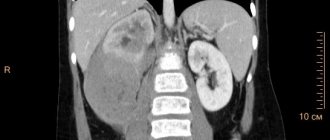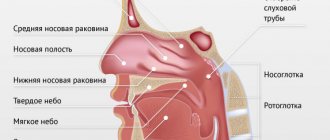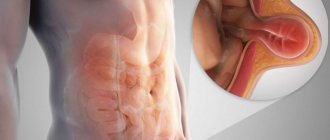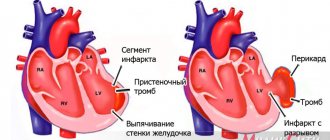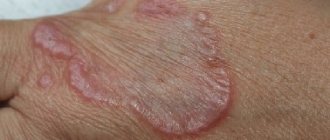Causes of occurrence Key signs of the disease Diagnosis and innovative detection methods Treatment of Burkitt's lymphoma in Israel Advantages of treating the disease in Israel Prognosis and rehabilitation
In medicine, under the term " Burkitt's lymphoma"
"mean a malignant tumor that can appear in almost any lymphatic tissue of the human body.
This formation has a pronounced tendency to rapidly spread beyond the lymphatic system, affecting neighboring organs and causing pain. Initially, the disease was diagnosed only in the countries of Oceania or Central Africa, but recently cases of Burkitt's lymphoma
have been recorded on the European continent.
Causes
Today, experts find it difficult to give a clear answer as to what exactly provokes the occurrence of lymphomas. However, the list of main factors influencing the appearance of malignant tumors includes:
- bad heredity;
- exposure to ionizing radiation;
- unfavorable environmental conditions;
- ingestion of chemical toxins or carcinogens into the body.
Additionally to the list of causes of Burkitt's lymphoma
certain infections can be included. For example, it has been scientifically established that 95% of African children suffering from the disease in question were initially diagnosed with the disease caused by the Epstein-Barr virus. It contributed to the development of fatal tumors, especially in those who suffered from immune deficiency or constant overwork.
Forecast
| This section should be updated . |
The overall cure rate for Burkitt's lymphoma in developed countries is about 90%, but is worse in low-income countries. Burkitt's lymphoma is rare in adults, who have a worse prognosis.[3]
In 2006, treatment with dose-adjusted Rituximab EPOCH showed promising initial results in a small group of patients (n = 17) with 100% response and 100% response rates. Overall survival and progression-free survival at 28 months (median follow-up).[24]
Key signs of the disease
Externally Burkitt's lymphoma
represents single or multiple neoplasms that appear on the kidneys, ovary, peritoneal cavity, pancreas, intestines, and other vital organs.
The tumor quickly increases in size, affecting soft tissues or destroying bones, as a result of which the patient may experience difficulty breathing, dizziness, and increased body temperature. Further development of Burkitt's lymphoma
leads to compression of the spinal cord roots, permanent bone fractures or paralysis. Other important signs of this disease include:
- deformation of the nasal septum;
- swallowing dysfunction;
- intestinal obstruction or abdominal pain;
- the presence of neoplasms in the jaw area, etc.
Depending on the form of development of the disease, the symptoms of Burkitt's lymphoma
may be accompanied by a number of other painful sensations, if they occur, you should immediately consult a doctor.
Treatment
Malignant Burkitt lymphoma is highly sensitive to chemotherapy. In 80% of cases, intensive high-dose polychemotherapy provides long-term remission (https://cyberleninka.ru/article/n/limfoma-berkitta-klinika-diagnostika-lechenie/viewer). But relapses of LB are difficult to treat.
The main treatment method for LB is intensive PCT regimens. Additionally, symptomatic treatment is prescribed to correct electrolyte disturbances and eliminate other symptoms. In case of acute renal failure, hemodialysis sessions are performed daily.
Surgical treatment for Burkett's lymphoma is not advisable. It not only does not improve the condition, but also leads to loss of time and worsening prognosis due to prolonged rehabilitation after surgery and rapid re-growth of the tumor.
Surgical intervention is justified only in life-threatening conditions (gastrointestinal bleeding, organ perforation, intestinal obstruction
Diagnostics and innovative detection methods
In Israeli clinics, this disease is diagnosed based on several factors, the main ones of which are enlarged lymph nodes and structural changes in the epithelial composition of the affected areas. For examination, a tissue biopsy is performed on the patient under general or local anesthesia, after which the presence of malignant cells is detected. In addition, a number of studies are being conducted to help determine the stage of development of Burkitt lymphoma.
and the presence of other pathologies in the body.
If enlarged lymph nodes cannot be detected by visual examination or by palpation, then a computed tomography scan is prescribed, which makes it possible to see hard-to-reach areas of the pelvis, abdominal cavity, and chest. The unique “St Jude/Murphy” system also helps to establish the stage of development of the disease, which displays the state of the patient’s immune system based on special studies.
100% accurate diagnosis is Ichilov’s calling card
Even before the patient arrives at the clinic, his examination program is carefully planned in order to obtain the necessary information about the characteristics of the disease in the shortest possible time and begin treatment on time. Typically the diagnostic process takes only three days.
First day
Immediately upon arrival at the clinic, the patient has a consultation with the attending physician, who conducts an examination, clarifies the symptoms that are troubling the patient, and studies the medical documentation provided by the patient. At the end of the consultation, the doctor decides which diagnostic procedures the patient will undergo in Ikhilov to confirm the diagnosis.
Second day
Typically, diagnosis of lymphoma in Israel is carried out using the following methods:
- CT scan. Using this method, the condition of the lymph nodes is checked.
- Blood analysis. The number of lymphocytes and deviations in other parameters are assessed.
- Positron emission tomography. This highly sensitive method can show the extent of the disease.
- Biopsy. Based on the test results, accurate conclusions can be drawn about the presence of lymphoma, as well as its type and size.
- Bone marrow puncture with cytogenetic analysis. Allows you to determine the condition of bone marrow tissue and identify the need for bone marrow transplantation.
- Gallium scintigraphy. The patient is injected with a gallium radioisotope and scanned with a gamma camera.
The third day
After receiving the results of the examination, a medical consultation gathers. On this day, doctors assess the overall prognosis and collectively choose the most promising treatment regimen.
Treatment of Burkitt's lymphoma in Israel
Has proven itself in the process of getting rid of Burkitt's lymphoma
a method of chemotherapy that involves introducing various potent substances into the patient’s body that kill malignant cells.
One of these drugs was cyclophosphamide, administered intravenously in an amount of 30-40 mg/kg. The course of therapy, as a rule, includes 2-3 injections every 10-14 days (not more often).
Embiquin, also administered intravenously at 0.2-0.3 mg/kg/day, helps in the fight against Burkitt's lymphoma The course of treatment with the mentioned medication is no more than 5-6 days at the discretion of the attending physician.
In recent years, Israeli medical institutions have combined chemotherapy with antiviral drugs. The fact is that during treatment the patient’s body is exhausted and susceptible to all sorts of viral infections, which cause serious health complications and also slow down the rehabilitation process. For example, when taking cyclophosphamide and ganciclovir (sometimes foscarnet) in combination, the likelihood of various types of pathologies in the patient decreases.
An innovative way to combat the described disease, used in Israeli clinics, is the introduction of hematopoietic cells into the affected lesions. This method allows you to consolidate the effect achieved with chemotherapy and restore the functions of damaged organs in the shortest possible time.
Discussion
By 2009, 101 cases of a combination of NHL and pregnancy were described in the literature [3]. By 2013, 74 papers describing 121 clinical observations were presented in the foreign literature [15]. At the same time, in recent decades there has been an increase in the incidence of NHL, which makes this problem urgent [16–18]. The most common type of NHL diagnosed during pregnancy is primary mediastinal B-cell lymphoma [16].
Basic data on pregnancy-associated NHL are limited to individual case reports, which makes it difficult to develop tactics for the treatment of lymphoma and management of pregnancy against the background of hematological malignancy [15]. The combination of LB and pregnancy is even less common; isolated similar cases have been described in the world, some of them are presented in Table 1.
Collaborative prospective studies are needed to further characterize the pathophysiological and clinical aspects of this disease, which complicates pregnancy [15].
Pregnancy management in the Russian Federation is currently carried out in accordance with Order No. 736 of the Ministry of Health and Social Development of Russia dated December 3, 2007 “On approval of the list of medical indications for artificial termination of pregnancy.” Termination of pregnancy before 12 weeks. indicated for patients in the following cases: lymphomas from high-risk groups (follicular NHL, diffuse NHL, peripheral and cutaneous T-cell lymphomas, other and unspecified types of NHL, malignant immunoproliferative diseases, multiple myeloma), lymphogranulomatosis stages III–IV. In the second and third trimesters, the issue of termination of pregnancy is decided in each individual case by a council with the participation of a hematologist, oncologist, obstetrician-gynecologist, neonatologist, therapist and, of course, the mother of the unborn child and her relatives.
The standard treatment for LB are protocols that include high doses of methotrexate and cytarabine: R-Hyper-CVAD, R-CODOX–M/IVAC, NHL-BFM. However, due to their ability to penetrate the blood-placental barrier, they cannot be used during pregnancy. The R-DA-EPOCH program is included in the Russian national clinical guidelines as a protocol for patients who, due to the severity of their condition, cannot undergo more intensive chemotherapy. In our case, the choice of this chemotherapy program allowed us to achieve remission and provided the opportunity to prolong pregnancy.
Advantages of treating the disease in Israel
Today, Israeli medicine has made significant progress in the treatment of Burkitt's lymphoma.
High-tech equipment allows timely diagnosis and effective treatment of this disease at any stage of development. The list of key advantages of treatment in the mentioned country includes:
- quality care and spacious rooms;
- use of the latest drugs;
- 24-hour supervision by highly qualified doctors;
- the opportunity to consult with leading experts in their field.
When primary signs of Burkitt's lymphoma
You shouldn’t delay visiting a doctor, because the likelihood of recovery directly depends on how quickly a person seeks help.
Advantages of Top Ichilov
- The clinic’s oncologists and oncohematologists are first-class doctors and experts in the treatment of a variety of lymphomas. They have undergone many years of training and have exceptional experience.
- Diagnostic studies are carried out using the latest laboratory technology and high-precision equipment.
- Unique methods are used for treatment, ranging from highly effective chemotherapy regimens to the use of immune drugs.
- Patients of the clinic live in comfortable rooms, surrounded by an atmosphere of comfort, and a personal curator-translator is engaged in interaction with doctors and translation of medical documentation.
- 5
- 4
- 3
- 2
- 1
(12 votes, average: 4.4 out of 5)
References
- sind / 2511
in Who named it? - Burkitt, D. (1958). "Sarcoma of the jaw in African children." British Journal of Surgery
.
46
(197): 218–23. doi:10.1002/bjs.18004619704. PMID 13628987. S2CID 46452308. - ^ a b c d e
Molyneux E, Rochford R, Griffin B, Newton R, Jackson J, Menon G, Harrison S, Israels T, Bailey S (April 2012).
"Burkitt's Lymphoma" (PDF). Lancet
.
379
(9822):1234–1244. Doi:10.1016/S0140-6736(11)61177-X. PMID 22333947. S2CID 39960470. - Doychinov, S.D.; Fend, F; Quintanilla-Martinez, L. (2018, March 7). "EBV-positive lymphoproliferations of BT- and NK-derived cells in non-immunocompromised hosts". Pathogens (Basel, Switzerland)
.
7
(1): 28. doi:10.3390/pathogens7010028. PMC 5874754. PMID 29518976. - Brady J, McArthur JJ, Farrell PJ (December 2007). "Epstein–Barr virus and Burkitt's lymphoma." Journal of Clinical Pathology
.
60
(12):1397–1402. doi:10.1136/jcp.2007.047977. PMC 2095571. PMID 18042696. - Bellan S., Lazzi S., De Falco G., Nyong'o A., Giordano A., Leoncini L. (March 2003). "Burkitt's lymphoma: new insights into molecular pathogenesis". J. Clin.
Patol .
56
(3): 188–92. Doi:10.1136/jcp.56.3.188. PMC 1769902. PMID 12610094. - ^ a b
Casulo S., Friedberg J. (September 2015).
"Treatment of Burkitt's lymphoma in adults." Current reports on hematologic malignancies
.
10
(3): 266–71. doi:10.1007/s11899-015-0263-4. PMID 26013028. S2CID 21258747. - Vockerodt M, Yap LF, Shannon-Lowe C, Curley H, Wei W, Vrzalikova K, Murray PG (January 2015). "Epstein-Barr virus and the pathogenesis of lymphoma." Journal of Pathology
.
235
(2):312–22. Doi:10.1002/path.4459. PMID 25294567. S2CID 22313509. - Doychinov S.D., Fend F., Quintanilla-Martinez L. (March 2021). "EBV-positive lymphoproliferations of BT- and NK-derived cells in non-immunocompromised hosts". Pathogens (Basel, Switzerland)
.
7
(1): 28. doi:10.3390/pathogens7010028. PMC 5874754. PMID 29518976. - Navari, M., Etebari, M., De Falco, G., Ambrosio, M. R., Ghibellini, D., Leonsini, L., Piccaluga, P. P. (2015). "The presence of Epstein-Barr virus significantly influences the transcriptional profile in immunodeficiency-associated Burkitt lymphoma." Frontiers in Microbiology
.
6
: 556. doi:10.3389/fmicb.2015.00556. PMC 4462103. PMID 26113842. - Rezk S.A., Zhao H., Weiss L.M. (September 2021). "Epstein-Barr virus (EBV)-associated lymphoid proliferation, 2018 update." Human pathology
.
79
: 18–41. doi:10.1016/j.humpath.2018.05.020. PMID 29885408. - Grande, Bruno M.; Gerhard, Daniela S.; Jiang, Aixiang; Greener, Nicholas B.; Abramson, Jeremy S.; Alexander, Thomas B.; Allen, Hilary; Ayers, Leona W.; Betony, Jeffrey M.; Bhatia, Kishore; Bowen, Jay; Casper, Corey; Choi, John Kim; Kulibrk, Luke; Davidsen, Tanya M.; Dyer, Maureen A.; Gastier-Foster, Julie M.; Gesuwan, Pati; Greiner, Timothy C.; Gross, Thomas G.; Hanf, Benjamin; Harris, Nancy Lee; He, Yiwen; Irwin, John D.; Jaffe, Elaine S.; Jones, Stephen J.M.; Kerchan, Patrick; Knetze, Nicole; Leal, Fabio E.; Lichtenberg, Tara M.; Ma, Yussanna; Martin, Jean Paul; Martin, Marie-Reine; Mbulaitey, Sam M.; Mulligan, Charles J.; Mungall, Andrew J.; Namirembe, Constance; Novick, Karen; Noah, Ariela; Ogwang, Martin D.; Omoding, Abraham; Orem, Jackson; Reynolds, Stephen J.; Rushton, Christopher K.; Sandlund, John T.; Schmitz, Roland; Taylor, Cynthia; Wilson, Wyndham H.; Wright, George W.; Zhao, Eric Y.; Marra, Marco A.; Morin, Ryan D.; Stoudt, Louis M. (March 21, 2021). "Genome-wide discovery of somatic coding and noncoding mutations in childhood endemic and sporadic Burkitt lymphoma." Blood
.
133
(12):1313–1324. Doi:10.1182/blood-2018-09-871418. PMC 6428665. PMID 30617194. - ^ a b c
Hoffman, Ronald (2009).
Hematology: Basic Principles and Practice
(PDF) (5th ed.). Philadelphia, PA: Churchill Livingston/Elsevier. pp. 1304–1305. ISBN 978-0-443-06715-0. - Liu D., Shimonov J., Primanneni S., Lai Y., Ahmed T., Sater K. (2007). "t(8;14;18): 3-way chromosome translocation in two patients with Burkitt's lymphoma/leukemia." Mol.
Cancer .
6
(1): 35. doi:10.1186/1476-4598-6-35. PMC 1904237. PMID 17547754. - ^ a b
Smardova J., Grokhova D., Fabian P. et al. (October 2008).
"An unusual p53 mutation found in Burkitt's lymphoma: a 30-bp duplication." Oncol.
Representative .
20
(4): 773–8. Doi:10.3892 / or_00000073. PMID 18813817. - Fujita S., Buziba N., Kumatori A., Senba M., Yamaguchi A., Toriyama K. (May 2004). "Early stage of lytic Epstein–Barr virus infection leading to the formation of a 'starry sky' pattern in endemic Burkitt's lymphoma." Arch.
Patol. Laboratory. Med .
128
(5):549–52. Doi:10.1043/1543-2165 (2004) 128 2.0.CO; 2 (inactive 11/10/2020). PMID 15086279.CS1 maint: DOI inactive as of November 2021 (site link) - Stephen H. Swerdlow (2008). WHO classification of tumors of hematopoietic and lymphoid tissues
. World Health Organization classification of tumors. Lyon, France: International Agency for Research on Cancer. ISBN 978-92-832-2431-0. - Barnes, J.A.; LaCasce2, A.S.; Feng, Y.; and others. (2011). "Evaluation of the addition of rituximab to CODOX-M/IVAC in Burkitt's lymphoma: a retrospective analysis" (PDF). Annals of Oncology
.
22
(8): 1859–64. doi:10.1093/annonc/mdq677. PMID 21339382. - Miles, Rodney R.; Arnold, Stacy; Cairo, Mitchell S. (2012). "Risk factors and treatment for childhood and adolescent lymphoma/Burkitt's leukemia." British Journal of Hematology
.
156
(6):730–743. Doi:10.1111/j.1365-2141.2011.09024.x. PMID 22260323. S2CID 6418151. - ^ a b c
"Burkitt's lymphoma and Burkitt's lymphoma: basics of practice, background, etiology and pathophysiology." June 29, 2021 Retrieved March 19, 2021 - via eMedicine. Magazine citation required | log = (Help) - https://www.bhs.be/frontend/files/userfiles/files/Guidelines/Burkitts_Lymphoma_2015.pdf
- Windham H. Wilson; Kieron Dunleavy; Stefania Pittaluga; Upendra Hegde; Nicole Grant; Seth M. Steinberg; Mark Raffeld; Martin Gutierrez; Bruce A. Chabner; Louis Staudt; Elaine S. Jaffe; John E. Janik (2008). “Phase II study of dose adjustment of EPOCH-rituximab in untreated diffuse large B-cell lymphoma with analysis of germinal center and post-germinal center biomarkers.” Journal of Clinical Oncology
.
26
(16):2717–2724. doi:10.1200/JCO.2007.13.1391. PMC 2409217. PMID 18378569. - Yushtein JT, Dang CV (2007). "Biology and treatment of Burkitt's lymphoma." Curr.
Opinion. Hematol .
14
(4): 375–81. doi:10.1097/MOH.0b013e3281bccdee. PMID 17534164. S2CID 8778208. - Dunleavy, Kieron; Pittaluga, Stephanie; Janick, John; Grant, Nicole; Shovlin, Margaret; Little, Richard; Yarchoan, Robert; Steinberg, Seth; Jaffe, Elaine S.; Wilson, Wyndham H. (November 16, 2006). "New treatment of Burkitt's lymphoma with dose-adjusted EPOCH-rituximab: preliminary results showing excellent outcome." Blood
.
108
(11): 2736. doi:10.1182/blood.V108.11.2736.2736. Retrieved March 19, 2021 - via www.bloodjournal.org. - Turgeon, Mary Louise (2005). Clinical Hematology: Theory and Procedures
. Hagerstown, MD: Lippincott Williams and Wilkins. p. 283. ISBN 0-7817-5007-5. Frequency of lymphoid neoplasms. (Source: Modified from WHO Blue Book on Tumors of Hematopoietic and Lymphoid Tissues. 2001, p. 2001.) - Pannone, Giuseppe; Zamparese, Rosanna; Pace, Mirella; Pedicillo, Maria; Caggiano, Simone; Somma, Pasquale; Errico, Maria; Donofrio, Vittoria; Franco, Renato; De Chiara, Annarosaria; Aquino, Gabriella; Bucci, Paolo; Bucci, Eduardo; Santoro, Angela; Bufo, Pantaleo (2014). "The role of EBV in the pathogenesis of Burkitt's lymphoma: a study conducted in an Italian hospital." Infectious agents and cancer
.
9
(1): 34. doi:10.1186/1750-9378-9-34. ISSN 1750-9378. PMC 4216353. PMID 25364378. - "NIH Study Shows Burkitt's Lymphoma Is Molecularly Different from Other Lymphomas." National Cancer Institute. Archived from the original on 08/2012/16. Retrieved 2012-10-19.
- Staudt L; and others. (2012). "Pathogenesis of Burkitt's lymphoma and therapeutic targets from structural and functional genomics". Nature
.
490
(7418): 116–120. Bibcode:2012Natura.490..116S. Doi:10.1038/nature11378. PMC 3609867. PMID 22885699.


